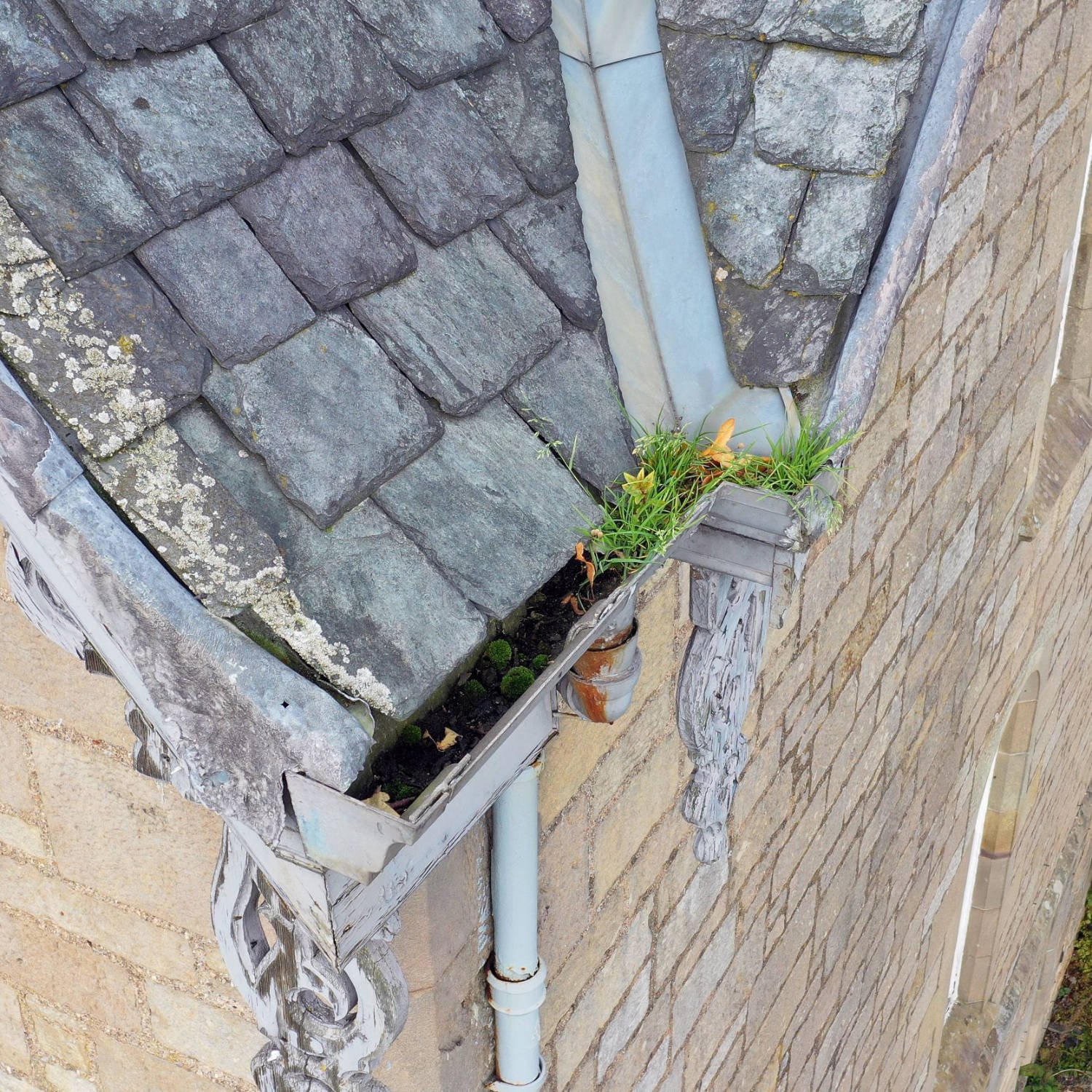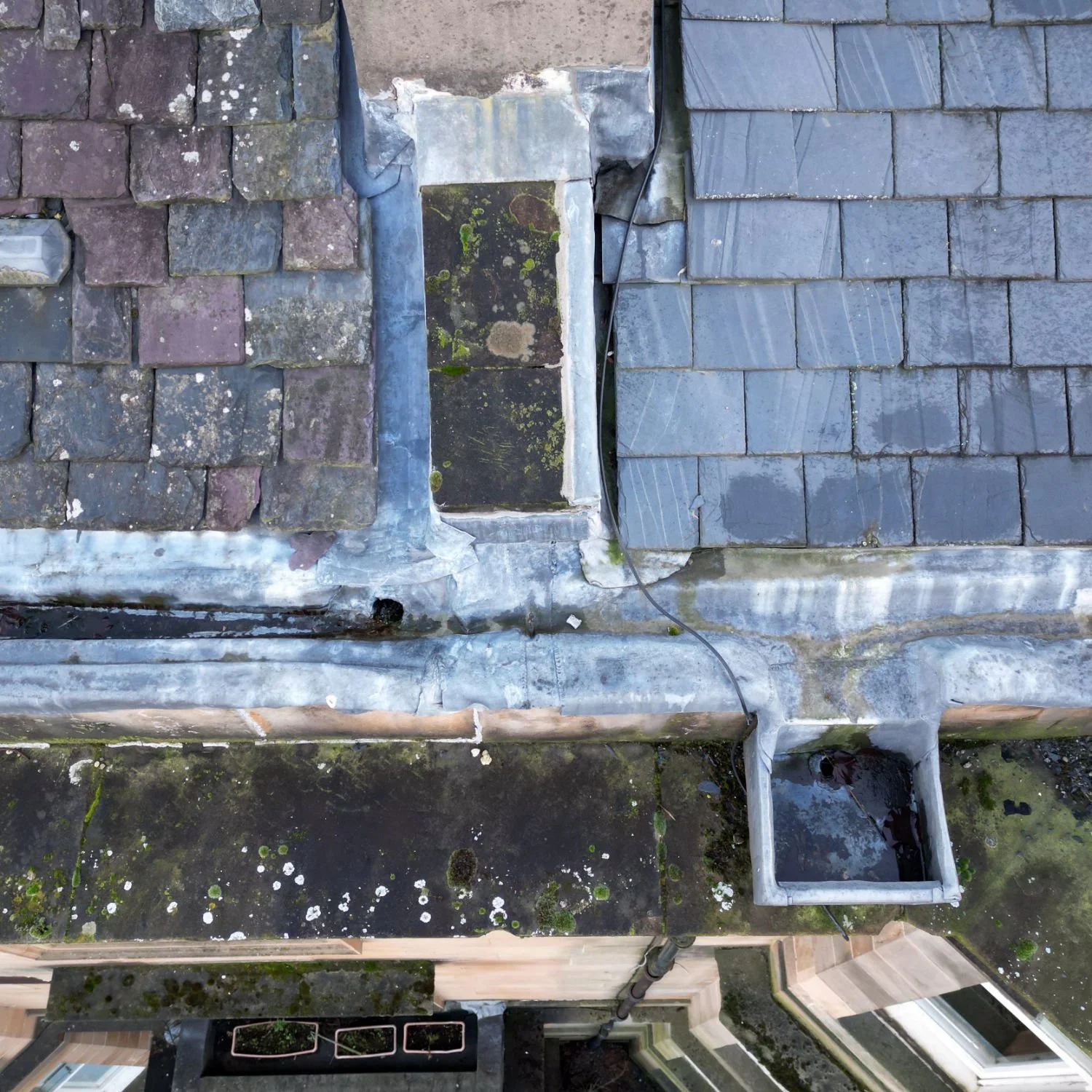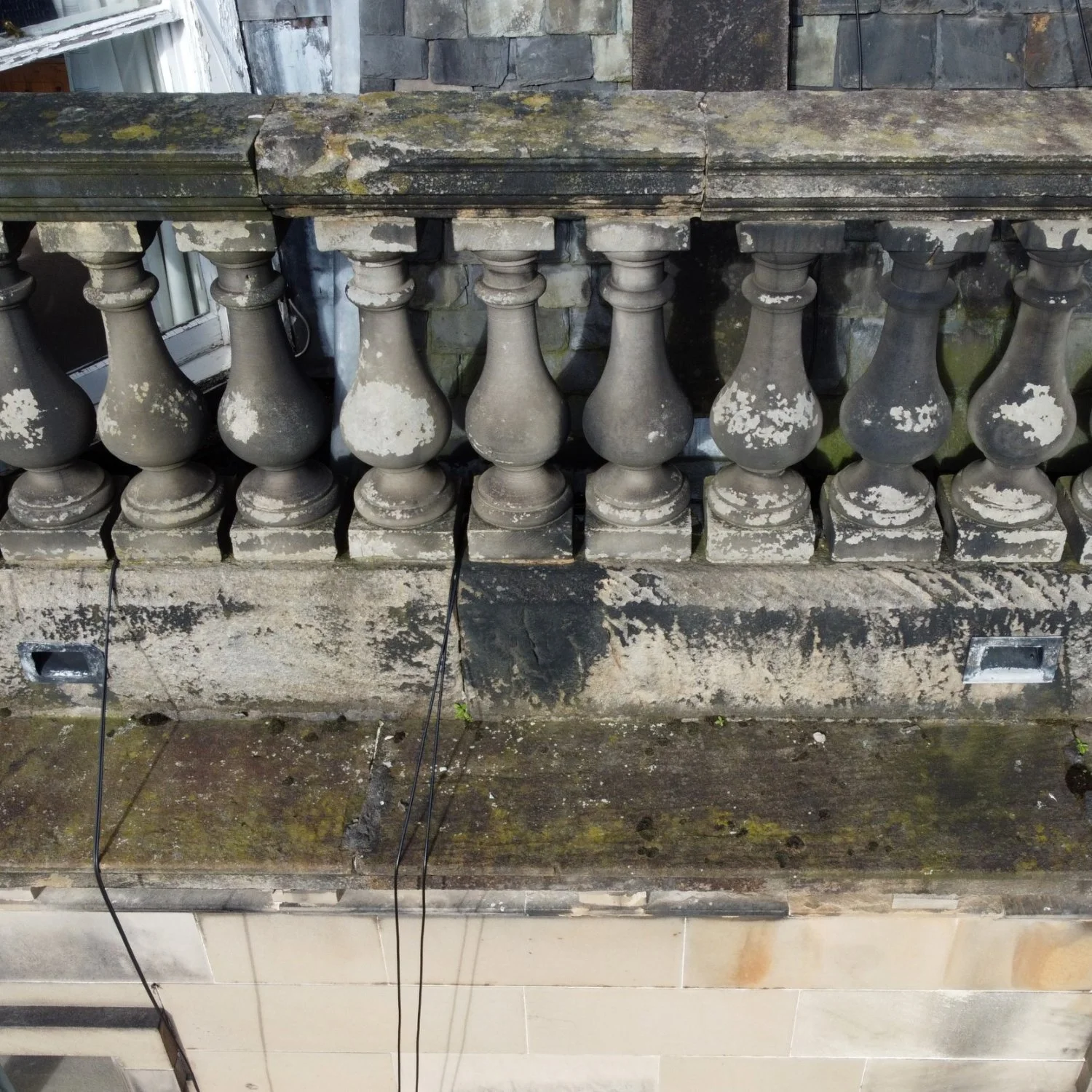
More video on our YouTube channel @stoneworks-scot
Portfolio of our survey work
All the images displayed on our website are compressed to reduce loading times, and this can result in some loss of quality. Our clients can be assured that they will be provided with HD quality images at the original resolutions following a survey.
-

Overhead views of roof areas
A bird’s eye view of a roof provides a sense of scale, widens understanding of how different building elements work in relation to each other, and improves understanding of survey reports.
-

Complex roofs
Complex roofs with lots of different facing surfaces makes inspection from a stationary position difficult. Overhead inspection enables condition assessment of normally inaccessible or hidden areas.
-

Rainwater systems
Regular inspection will identify blocked gutters which could overflow, causing saturation and dampness within masonry walls. High resolution photographs can reveal advanced corrosion and damage to cast iron components which can result in leaks.
-

Chimney stacks
The condition of a chimney will be worse than it looks from ground level. Inspection from above can reveal stone decay, open joints, loose pots, and expose inappropriate repairs.
-

Roof spaces
Inspection of the roof space may reveal evidence of water ingress and timber decay resulting from deterioration of the roof covering. This can inform the inspection of exterior building fabric helping to focus on problem areas.
-

Masonry at height and roof level
Close visual inspection of normally inaccessible masonry at height can reveal structural movement, open joints, and decay that could allow water to penetrate or eventually lead to instability.
-

Towers and steeples
The ability to capture high-resolution, high-quality images from an aerial position significantly reduces the need for high-risk manual inspection which can be time consuming and expensive.
-

Cupolas and rooflights
Difficult access means that broken glass, glazing putty failure, corrosion of steel frames, and rot in timber frames, can all go unnoticed without regular inspection from the outside.
-

Leadwork valleys and flashings
Ageing leadwork can become perforated or split, or become detached during high winds, allowing penetrating water to cause dampness and encourage rot in structural timbers.
-

Masonry balustrades and parapets
Often neglected, these elements deteriorate rapidly if not regularly maintained. Structural movement, open joints and decay can all be identified without the need for scaffolding or other high-level access equipment
-

Vegetation
Vegetation which takes root in open joints can apply enough mechanical leverage to crack masonry and displace heavy stones. Water will penetrate cracks and widened joints, and the affected masonry may become unstable.
-

Masonry decay
Saturation from leaking rainwater systems, deterioration of mortar pointing and resulting open joints, and inappropriate repairs using materials like cement mortars, can all promote masonry decay and failure. Inspection can identify problem areas at an early stage.
